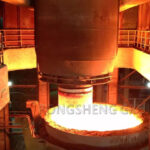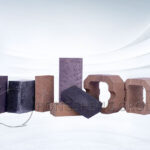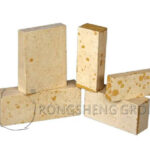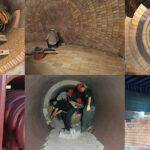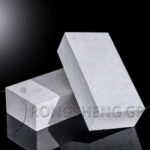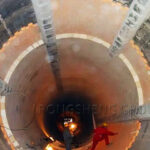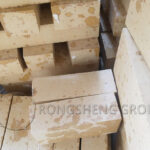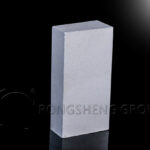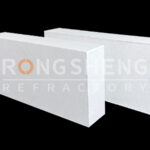Magnesia-iron bricks and magnesia-chrome bricks are two common refractories that differ in composition, performance, and use.
Different Composition
Magnesia bricks:
The main components are magnesium oxide (MgO) and iron oxide (Fe₂O₃). Generally speaking, the magnesium oxide content in magnesia bricks is higher, while the iron oxide content is lower.
The main components are magnesium oxide (MgO) and chromium oxide (Cr₂O₃). The magnesium oxide content in magnesia chrome bricks is usually above 60%, while the chromium oxide content is around 10-20%.
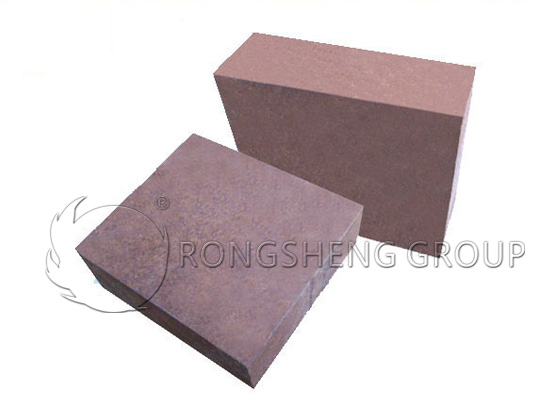
Different Refractory Properties
Magnesium iron bricks:
Magnesium iron bricks have high refractoriness, generally above 1800°C. They have good thermal shock resistance and high-temperature strength, and are suitable for environments with large temperature fluctuations. They have good thermal stability but may be corroded in certain chemical environments.
Magnesium chrome bricks:
Magnesium chrome bricks also have high refractoriness, generally between 1700°C and 1900°C. They have excellent slag resistance and corrosion resistance, especially in acidic and alkaline slags. They have excellent thermal stability and can maintain good structure and performance at high temperatures.
Different Chemical Stability
Magnesium iron bricks:
Perform well in oxidizing atmospheres, but may be affected by iron oxide reduction in reducing atmospheres. Corrosion resistance to acidic slag is average, but it can still maintain stability in some special environments.
Magnesium chrome bricks:
Have excellent chemical stability, especially in acidic and alkaline environments. Good corrosion resistance to various slags and high-temperature atmospheres, especially in environments containing impurities such as sulfur and phosphorus.
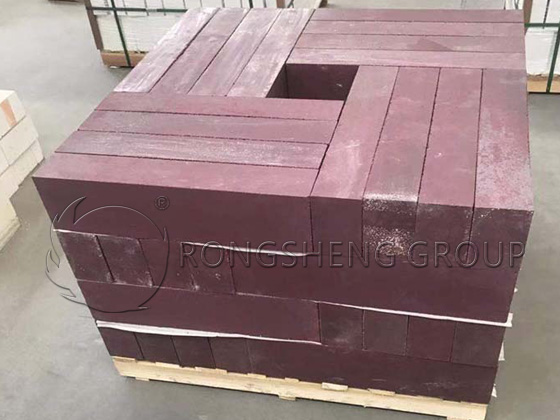
Different Application Areas
Magnesium iron bricks:
Mainly used in high-temperature equipment in the metallurgical industry, such as steelmaking furnaces, blast furnaces and electric furnaces. They are also used in some chemical high-temperature equipment, especially in places where high refractoriness and thermal shock resistance are required.
Magnesium chrome bricks:
Widely used in various high-temperature furnace linings in the metallurgical industry, such as converters, refining furnaces, electric furnaces, etc. They are also widely used in high-temperature equipment such as cement kilns and glass kilns, especially in environments that require high corrosion resistance. Suitable for high-temperature equipment in non-ferrous metal smelting, petrochemicals and other industries.
Differences in Environmental Protection and Safety
Magnesium iron bricks:
Since the main components are magnesium oxide and iron oxide, the manufacturing and use process has relatively little impact on the environment.
Magnesium chrome bricks:
Contain chromium oxide, which may produce hexavalent chromium compounds at high temperatures. Such compounds are potentially harmful to the environment and health. Therefore, appropriate environmental protection and safety measures need to be taken during use and disposal.
Summary
Magnesium iron bricks and magnesia chrome bricks each have their own advantages and scope of application. Magnesium iron bricks are suitable for environments with large high-temperature fluctuations due to their good thermal shock resistance and high-temperature strength. Magnesia chrome bricks are suitable for more demanding chemical environments due to their excellent slag resistance and corrosion resistance. When selecting specific refractory materials, reasonable selection should be made based on the actual use environment and process requirements.
Rongsheng Refractory Brick Factory is a powerful manufacturer and seller of refractory bricks. Rongsheng’s refractory brick products, magnesia iron bricks, magnesia chrome bricks, factory direct sales, reliable quality, and fast delivery. Contact Rongsheng for more information.

